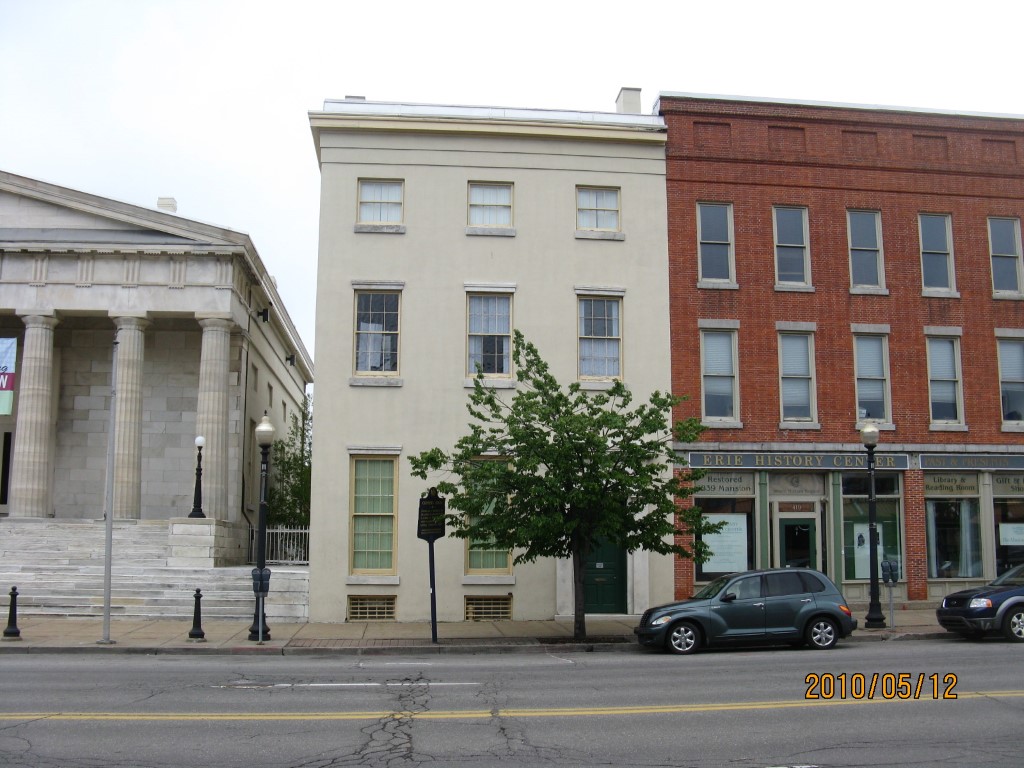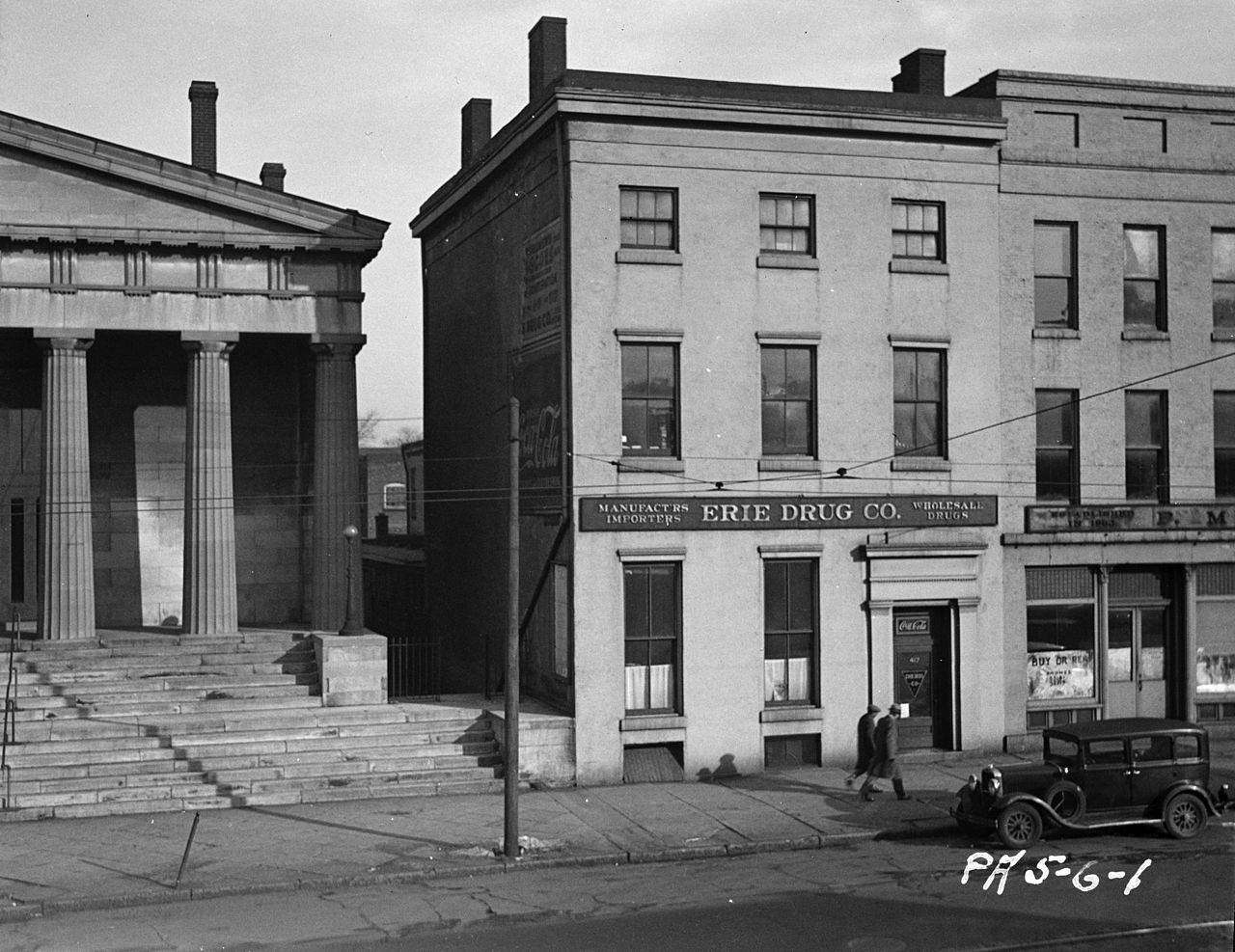| PROPERTY INFORMATION | ||
|---|---|---|
Historic Name |
Cashier's House |
|
Address |
417 State Street |
|
Municipality |
||
Tax Parcel |
||
Historic District |
|
|
Classification |
Class 1 (Definitions of Classes) |
|
State Key Number |
848 |
|
Historic Function |
Domestic - single dwelling |
|
Style |
||
Built |
1839 |
|
Architect |
|
|
Builder |
|
|
Barn Type on property |
|
|
Last Entry Update |
7/18/2016 |
|
| HISTORY |
The Cashier’s House, a three-structure Greek Revival style complex, was
built in 1839 by Philadelphia architect William Kelly. Connected to the
Cashier’s House as part of this complex was the Carriage House and the
Old Custom House, symbolizing the mid-nineteenth century hopes for the
future of the emerging business district and the nation itself. In the
eyes of Erie’s residents, the construction of the Erie Extension Canal
that would connect the City of Erie with the Ohio River could only lead
to abundance and growth. The Erie branch of the United States Bank of
Pennsylvania, for which the Cashier’s House was built, pointed towards
Erie’s prosperous future. Built for the bank’s first and only Cashier,
Peter Benson, the Cashier’s House and Carriage House would only be used
by the bank for four years. The U.S. Bank of Pennsylvania, and
subsequently its branches, closed in the early 1840s. The Erie branch
opened in 1839 and eventually succumbed in 1843. After this, the
Cashier’s House, and its connecting Carraige House, went through a
succession of owners. |
Sources: Frew, David, et al. Journey Through Time: Erie’s Best Downtown Walking Guide. Erie, PA: Erie County Historical Society, 2006. |
| DESCRIPTION |
| LINKS AND ATTACHMENTS |
| UPDATE |
If you have additional information or corrections to the existing information, send an email to info@preservationerie.org.
|
| CURRENT ASSESSMENT PHOTO |
|
| PHOTO FROM 2014 SURVEY |
| HISTORIC PHOTOGRAPHS |
|

